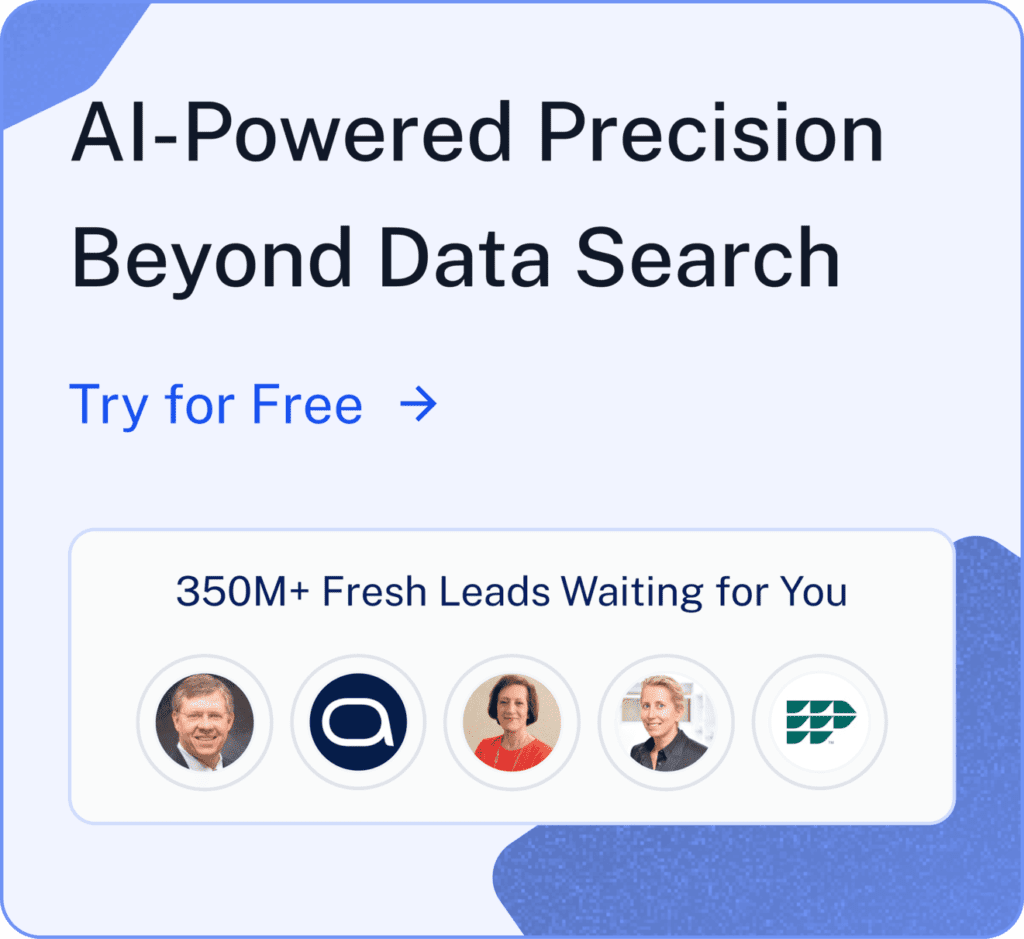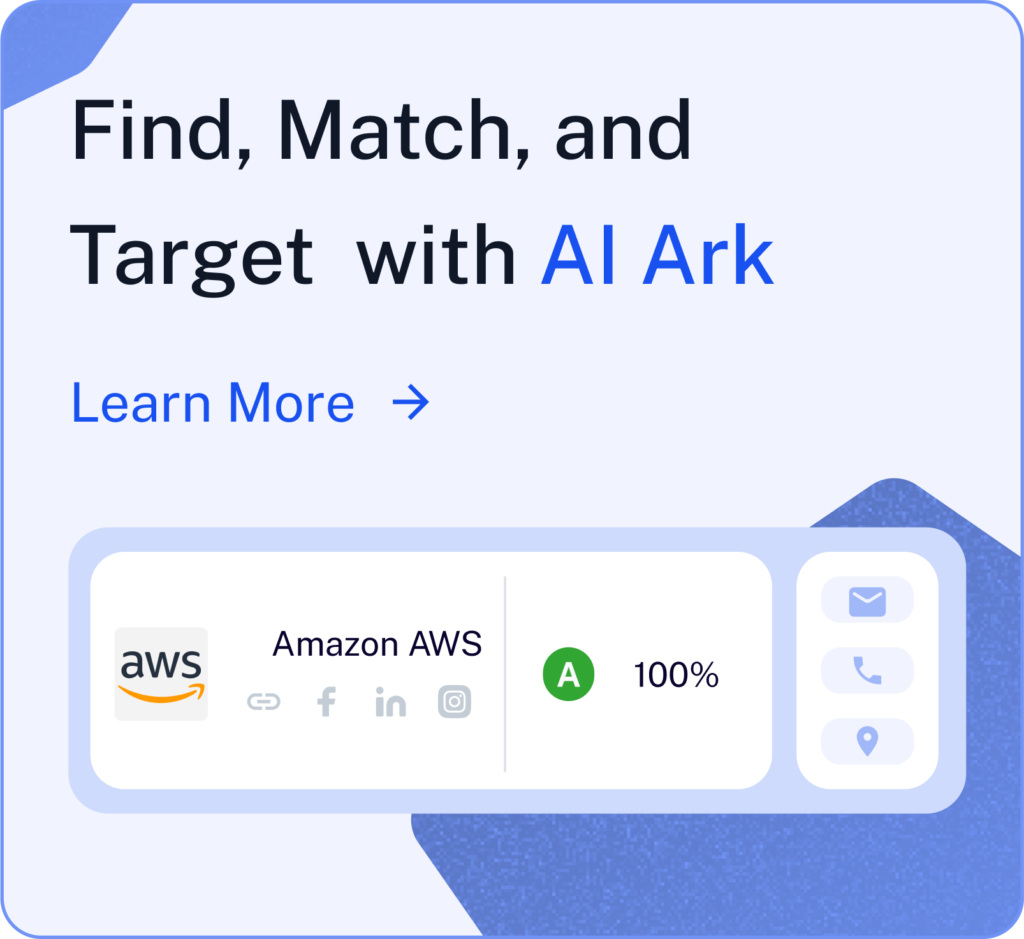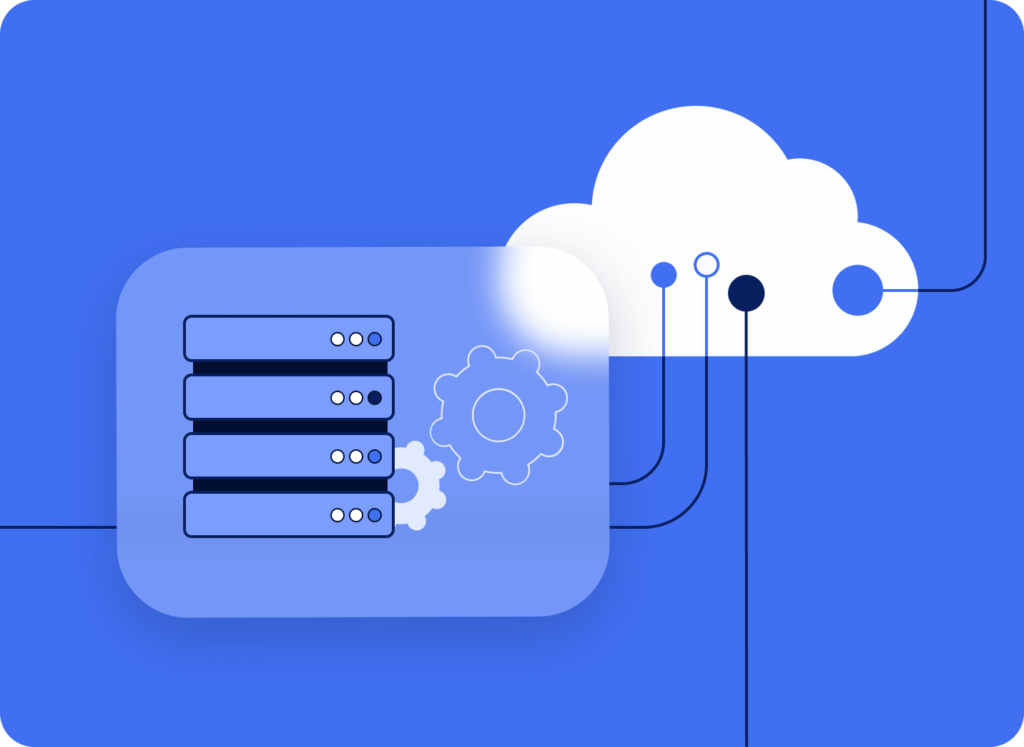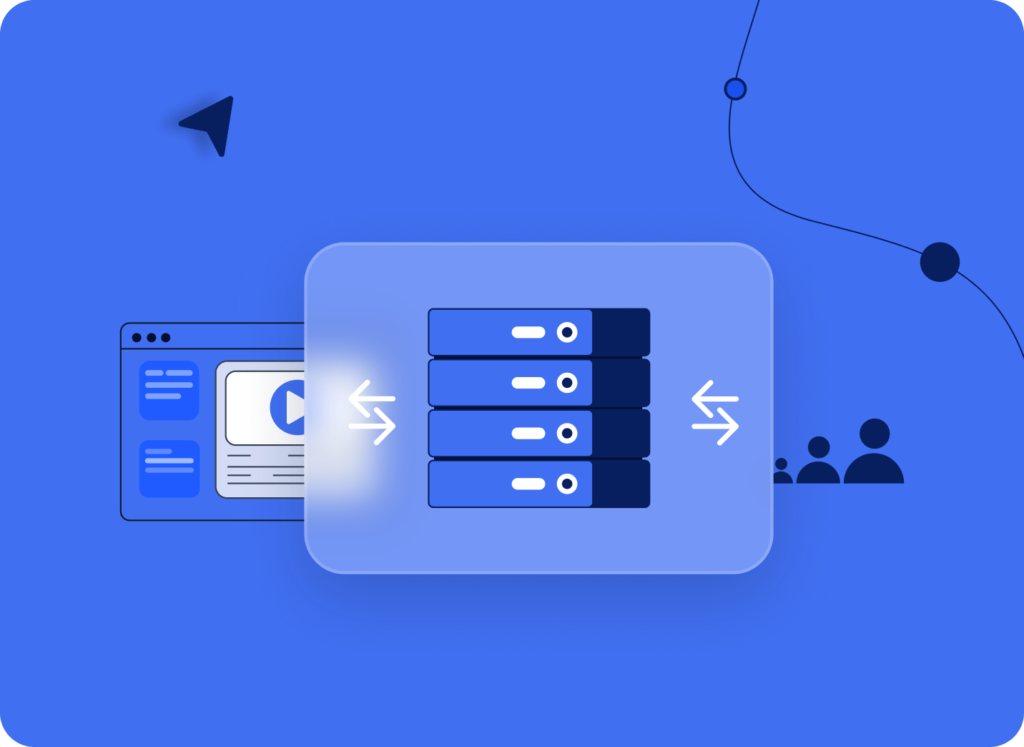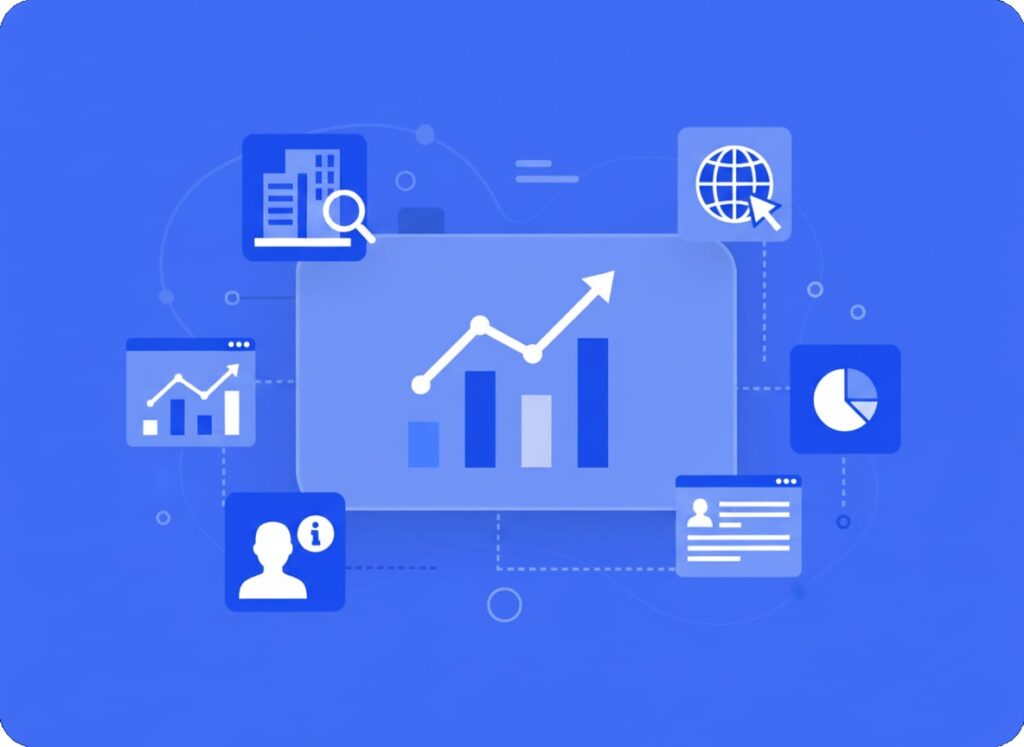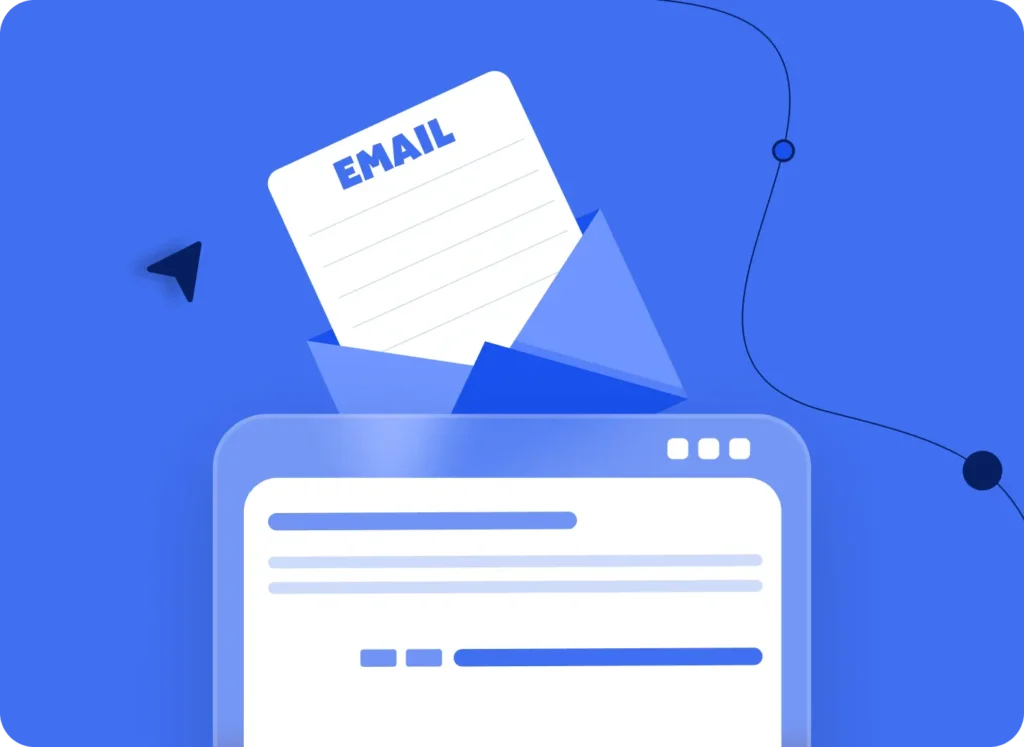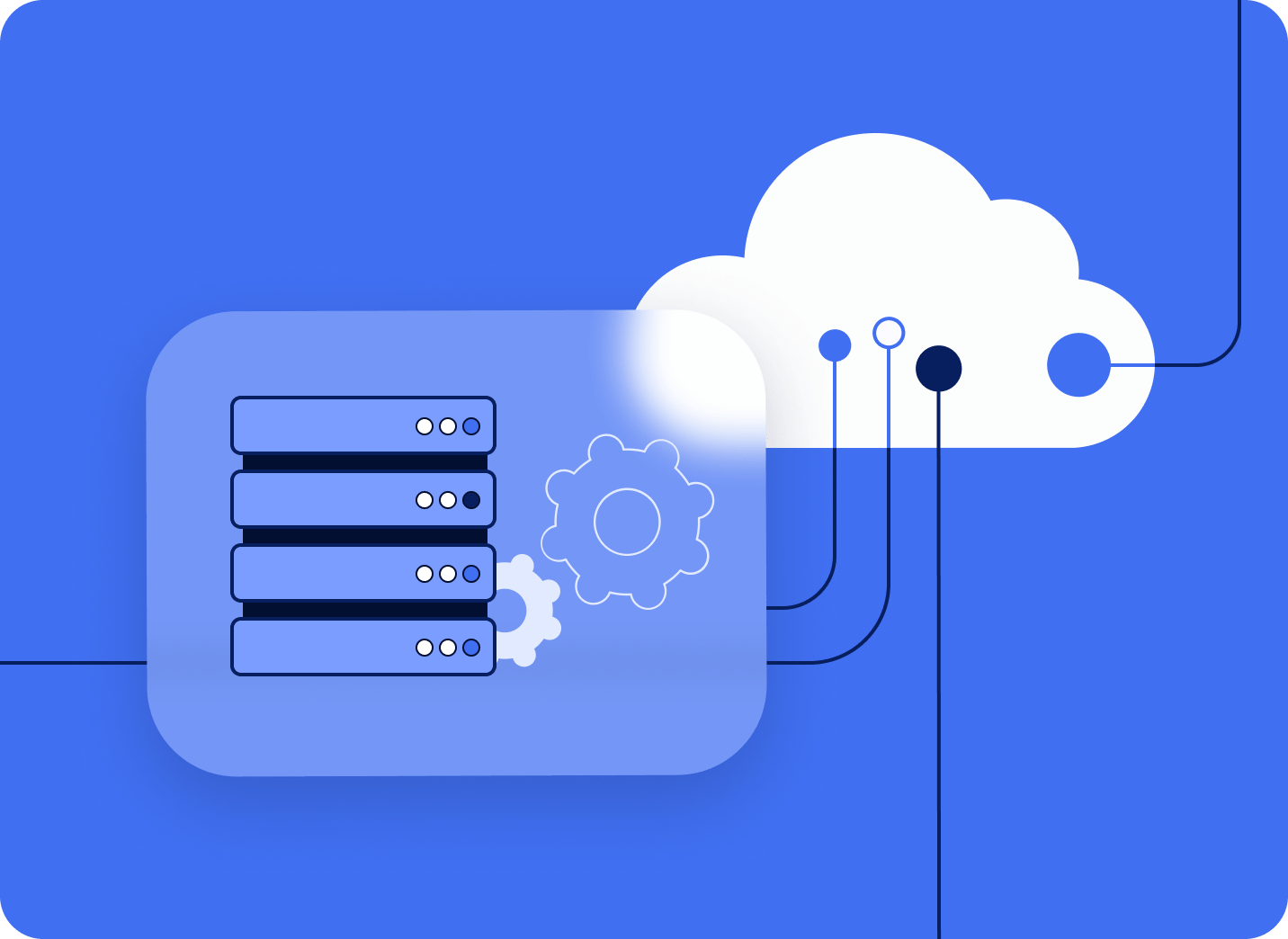Have you ever been on the lookout for a smart strategy to turn your business data into solid decisions?
B2B SaaS companies have never faced this much competition, and it is necessary to understand their customers better and use data-driven decision making.
For B2B SaaS companies, data is king. More than just numbers and collections, it’s a road for them to optimize their SaaS marketing strategies and find the best strategy to make better B2B marketing decisions.
Let’s just get started!
B2B Data for SaaS: What It Means for Your Business
For SaaS companies, B2B data brings a deep understanding of customer needs, helps them get deep insight and understanding of their clients, and helps them with SaaS customer acquisition. Also, B2B models have a broad audience range that helps you target large enterprises more easily. Here are the types of B2B data for SaaS that you will be working with:
- Customer: This category mostly consists of data related to clients, such as behavioral patterns, client preferences, and demographics. To generate B2B leads, you must understand your customers and how they interact with your business.
- Transactional: This data refers to customer transactions. This data will help you track customer behavior and identify new opportunities to improve your business and products.
- Market data: This data refers to the information that a business operates on. This data can include market trends, competitor analysis, or industry trends. Market data will help the business to make strategic decisions and acknowledge new business opportunities.
Whether you are trying SaaS-focused B2B insights to improve your SaaS lead generation in your startup or are a well-established organization looking for a strategy to grow your business, the strategies we discuss further in the next sections will help you enhance your business growth strategies.
According to a study, 89 percent of SaaS businesses focus on their primary growth strategy of acquiring new customers, which stands at 89 percent.
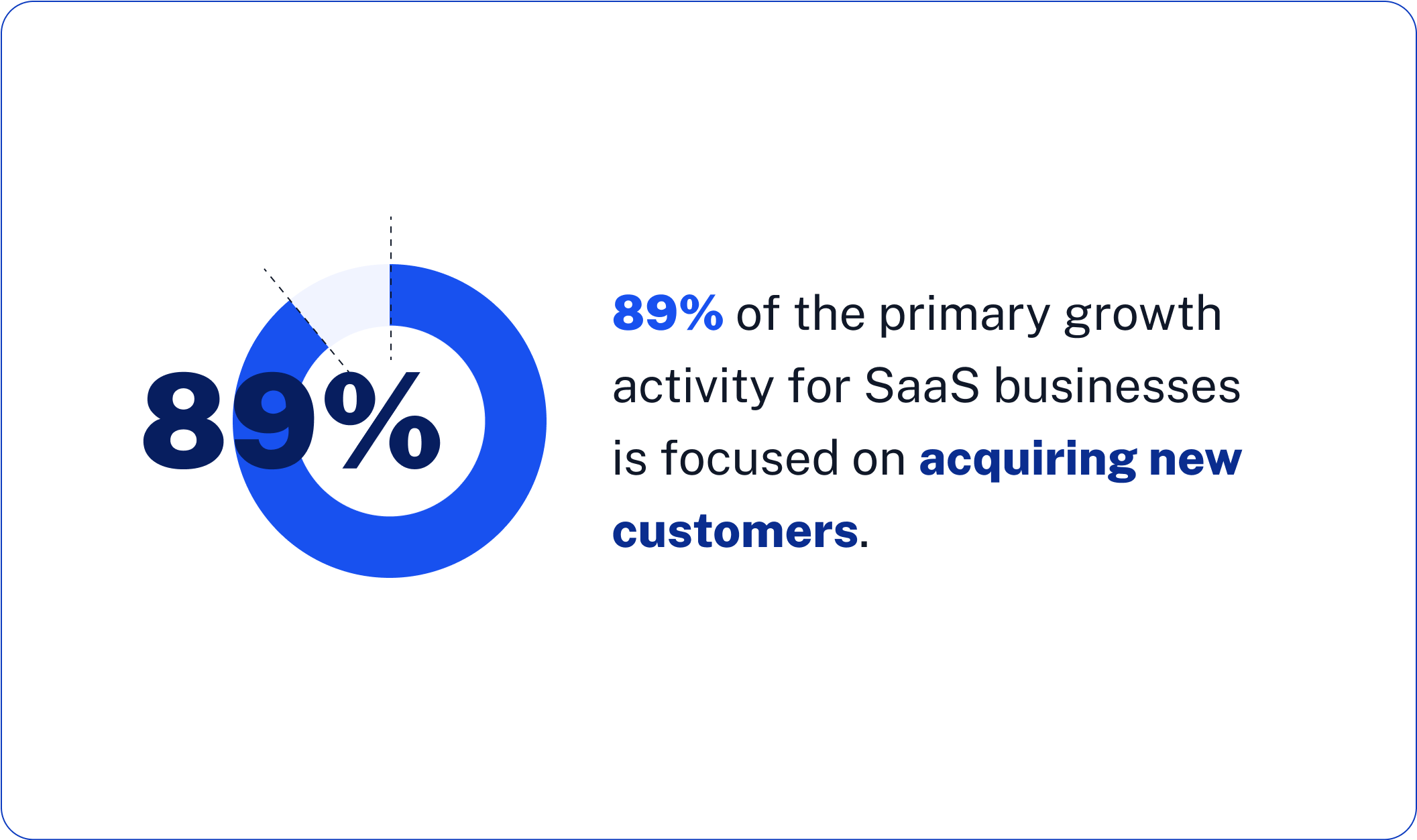
B2B Data for SaaS: Key Components
To fully understand the B2B-driven insights for SaaS, we need to understand what key components will help us to drive more success. The key components you should have in mind are:
- Accuracy: Accurate data is essential for making well-informed, data-driven decisions. It is one of the primary elements we need before making any decisions. Before embarking on any strategic planning, make sure that your data is precise and accurate.
- Consistency: data consistency refers to when data is stored in different platforms and has the same value in all databases. This is an important matter when it comes to b2b data because we want to make sure that our driven insights are accurate and effective.
- Completeness: Gaps in analysis results may lead to inaccurate insights. Consistent data provides a comprehensive view of your business analysis.
- Timeliness: Current and updated data are essential for making real-time decisions that effectively respond to market changes. Updating the data provides valuable insights into the current state of your business and your customers’ behavior, eventually enabling you to maintain a competitive edge.
Focusing on these components will help your business develop effective data-driven strategies and achieve more significant results through data enrichment.
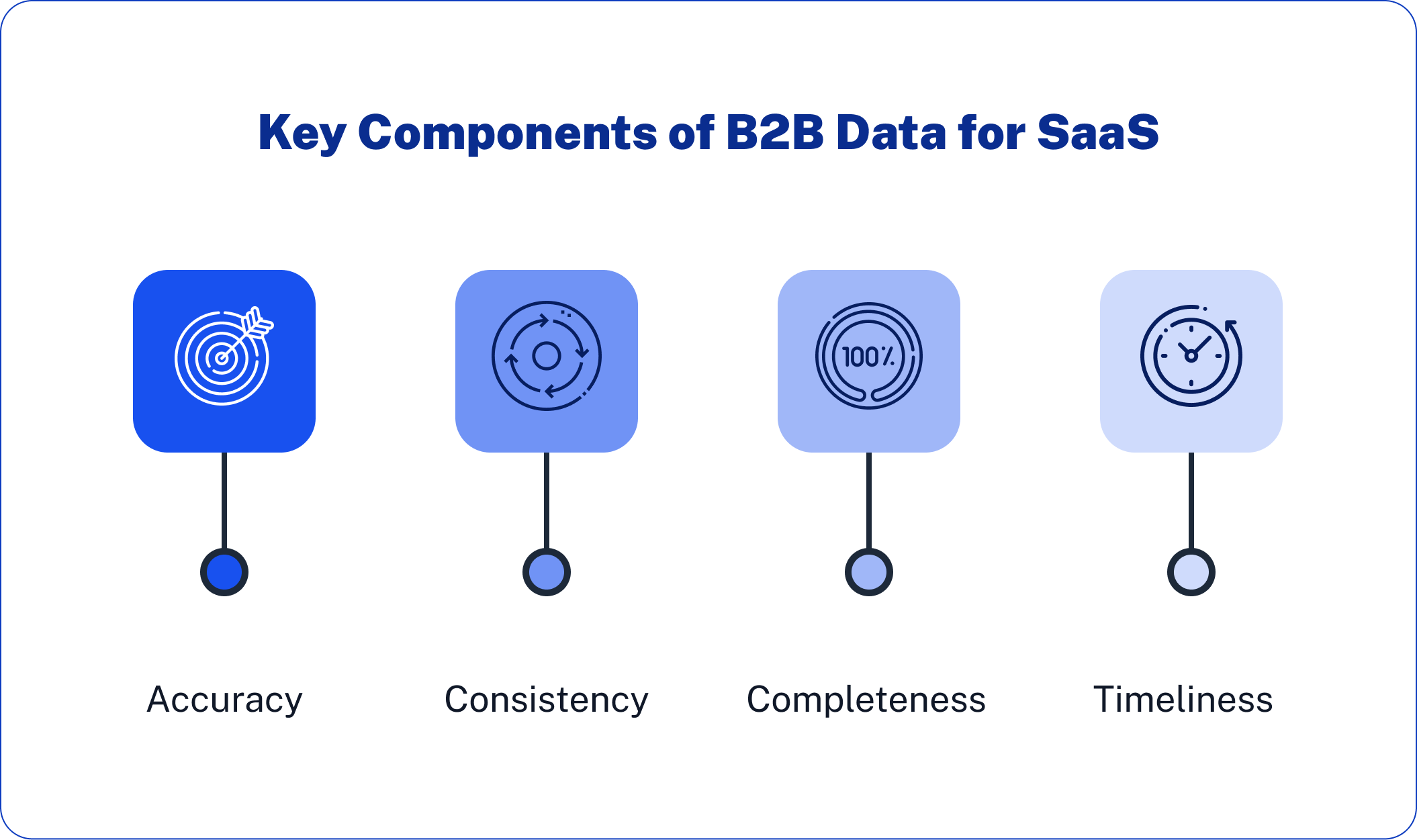
Implementing B2B Data for SaaS: Step-by-Step Strategies
All your efforts for data collecting and analysis are here to help you implement B2B data for SaaS. By analyzing your B2B data, you can identify and set strategies to help you implement data driven decision making and reach your business objectives.
But remember, implementation is not an easy step to take. For effectively implementing B2B data strategies for SaaS marketing, you may pay attention to the approaches below:
Assess Current Data Capabilities:
Assessing your available data capabilities will help you to identify your data better and understand which areas within your business need improvement, as well as areas that are performing well. There are several ways to assess B2B data based on your business perspectives, which will help you better understand your existing data.
So, how can we assess the capabilities of the data? Here are a few ideas that we can start our analysis with:
- First, start with how the data is like determining the quality of the data.
- For the next step, note any inconsistencies or data gaps to prevent any future misunderstanding and inaccurate conclusions.
- Evaluate the efficiency of the current tools that you are using.
- Determining the expertise of the team about b2b data and the strategies that are being used.
Define Clear Objectives:
This approach aims to establish measurable and clear goals and then prioritize them based on your business objectives and your organization’s long-term goals. Try to understand how data can support key areas in your B2B marketing and help you grow revenue.
It’s estimated that by 2025, 85% of business apps will be SaaS-based.
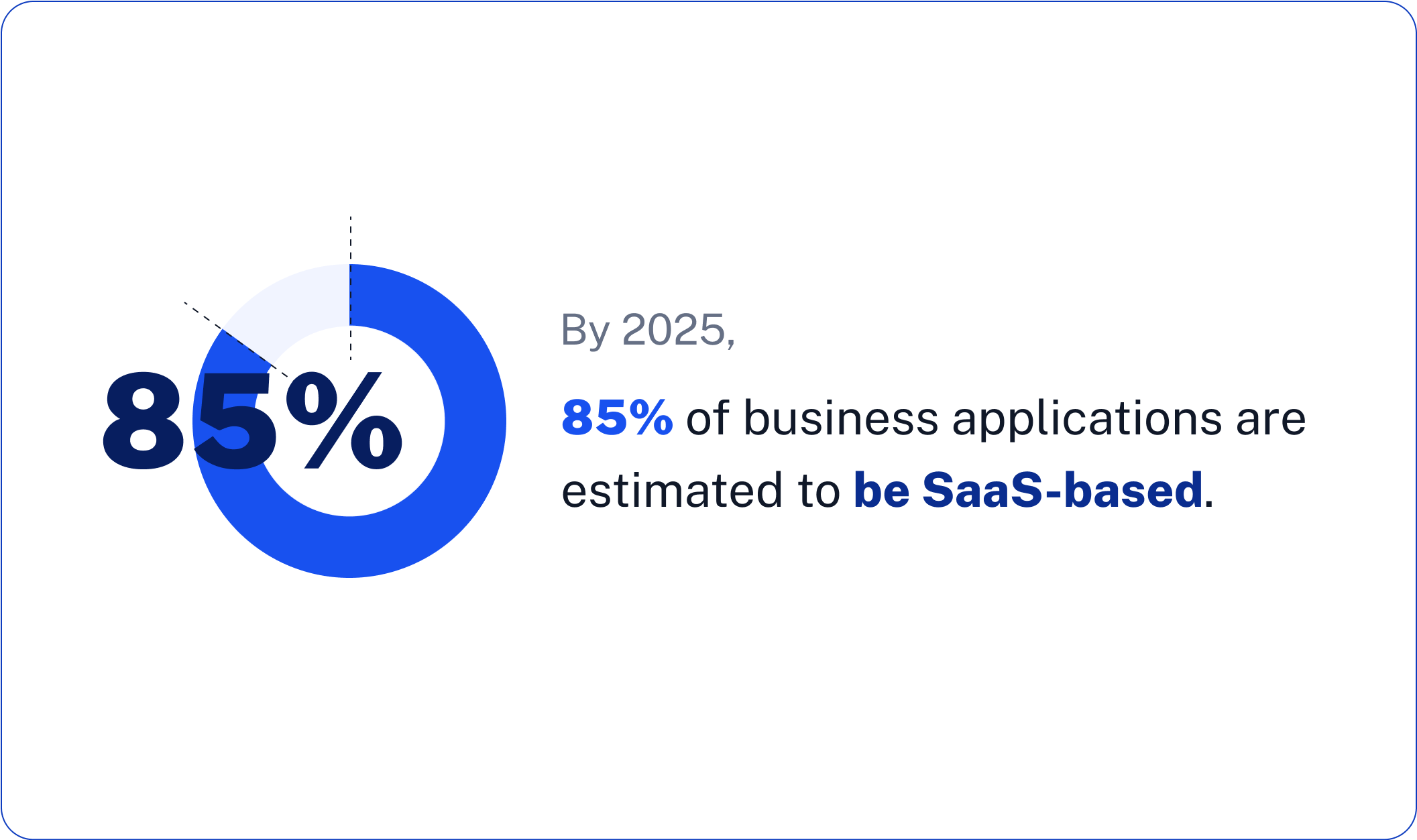
Choose the Right Tools:
Finding the right tools and platforms that fit your B2B strategy is key to hitting your goals. With the right tools, you’ll find it much easier to analyze and use B2B data. Think about what matters for your strategy—like data integration, how scalable the tools are, and their agility. Also, don’t forget to consider whether they support predictive analytics to help improve your business insights and efficiency.
Establish Data Governance:
A successful SaaS strategy starts with well managed data because If data is not well managed, it can turn into a nightmare. In this process, you can set clear goals like who can manage the data, who will have access to modify it, and of course the concept of how to keep the data consistent and secure.
Before diving in, though, it’s super important to align your data governance policies with your business goals. Once you have your objectives sorted out and your guidelines set, don’t forget to periodically review and update them to keep up with new marketing trends. That way, your data stays in sync with the changes in your business!
Integrating Data Sources
So, let’s talk about data integration. It’s basically the process of pulling together data from different sources to get a clear, unified view of everything going on in your business. In today’s world, we’re bombarded with tons of data every single day. Making sure that data is all working together is super important if we want to stay efficient and tackle any challenges that pop up.
When you’re juggling various systems like CRM or ERP, it can lead to messy or inconsistent data. But by integrating everything, you can get a solid, consistent picture of your info and avoid those annoying data silos. Plus, if you’re also tapping into external data sources like market research or competitive insights, it’s crucial to keep everything aligned. Otherwise, you might end up confused and misinformed. Bringing all these resources together gives you a well-rounded view of your data, which is what you really want!
70% of CIOs reported that agility and scalability are among the primary factors driving the integration of SaaS applications into their organizations.
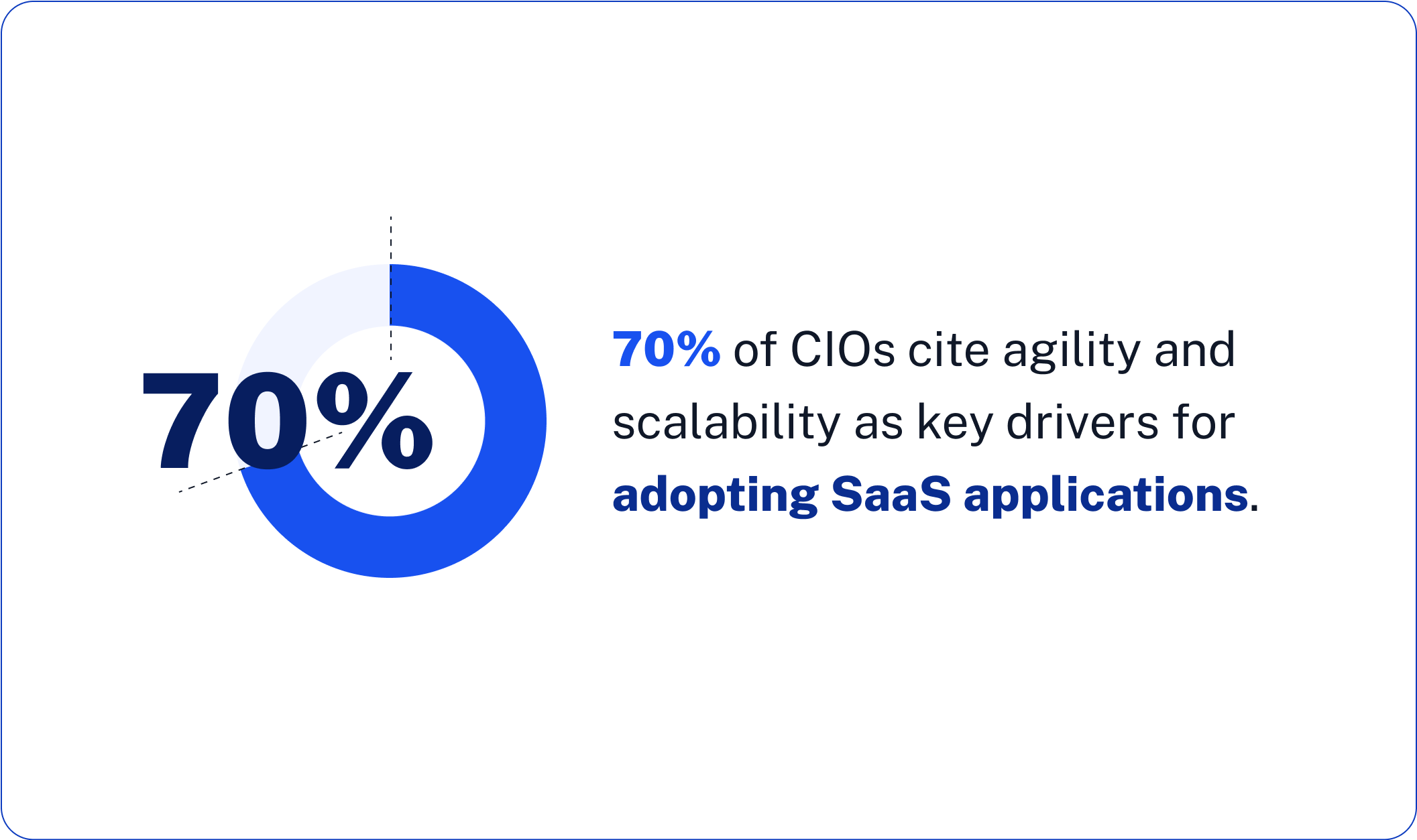
Analyze and Act on Data:
Continue to analyze your B2B data and processes to assess the effectiveness of your strategies and drive more actionable insights from the results. This new data will assist you in adapting your approach according to your insights and business requirements. You can define better real-time b2b strategies.
B2B Data for SaaS Customer Acquisition
Customer acquisition is an essential step for businesses to attract new customers, without customer acquisition, growth will be impossible. SaaS customer acquisition can enhance SaaS lead generation and create a targeted customer experience. SaaS customer strategies with the use of B2B data will help you effectively achieve your business goals.
By using data-driven decision-making and strategies, SaaS companies can reach precision and efficiency in SaaS customer acquisition plans and attract the right customers for the business.
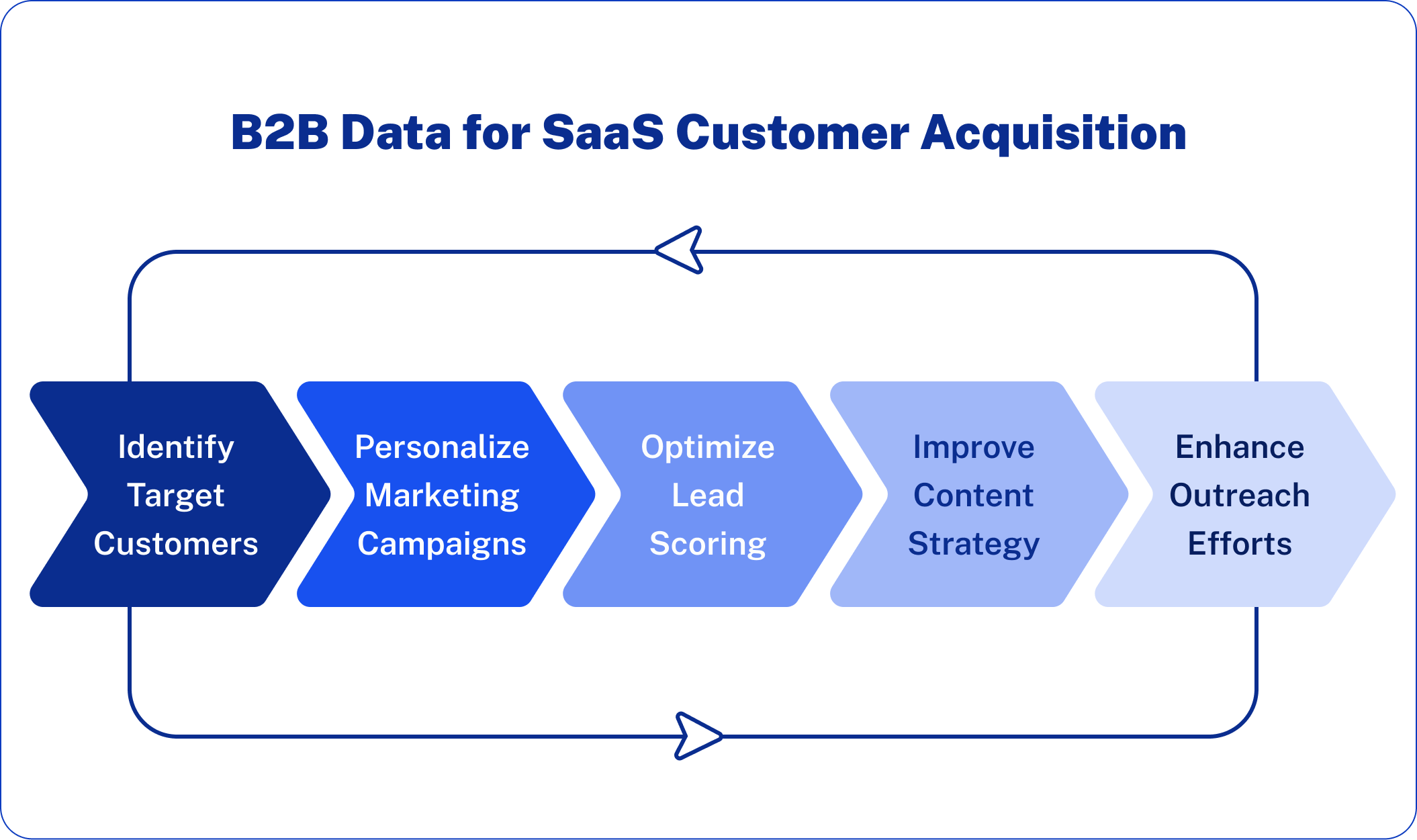
Identify Target Customers
As your B2B market expands and becomes more diverse, personalizing campaigns can become increasingly challenging. This is where B2B data becomes essential; leveraging B2B data enables you to understand and define the characteristics of your ideal customers and to develop detailed personas.
Your target customers are a good indicator of which customer acquisition methods you need to pick to get the best results and to find a better understanding of your targeted customers, you’ll need a thorough understanding of them. You can start by asking yourself who is a good candidate for my SaaS product?
Personalize Your Marketing Campaigns
When it comes to personalized marketing campaigns, it’s way more than just tossing your customers’ names into an email. It’s all about using what you know about them to create experiences that truly resonate with their wants and needs. This helps build trust within your customer community and makes sure you’re really addressing what they’re looking for.
Personalize Your Marketing Campaigns are more like a secret weapon that businesses can use to connect better with their target audience. But you have to remember when personalizing your campaigns, you shouldn’t get too personalized to seem creepy. In B2B markets, It’s more about keeping the balance.
Personalized campaigns in marketing help B2B businesses to have various benefits, they can recognize what their users need and put their features in the right place where their customers need them. This will not only save time but enables customers to solve their problems and needs easier.
So, when you’re implementing personalized marketing, get creative with different strategies and tools to make customer experiences feel special. That way, each interaction counts and has a better chance of turning into valuable leads!
Optimize Lead Scoring
Lead scoring is an approach to evaluate leads based on their likelihood to turn into conversions. It takes many factors into account to determine which leads are most likely to convert; with optimizing lead scoring, businesses can prioritize their efforts based on customers who are most likely to convert. This will help to boost conversion rates as well as save time by focusing more on customers that have higher scores.
You can also align lead scoring with your personalized marketing campaigns to gain a clear understanding of which strategies are generating the most leads, thereby maximizing our ROI.
Companies using lead scoring experience a 77% increase in lead generation and a 79% growth in sales productivity.
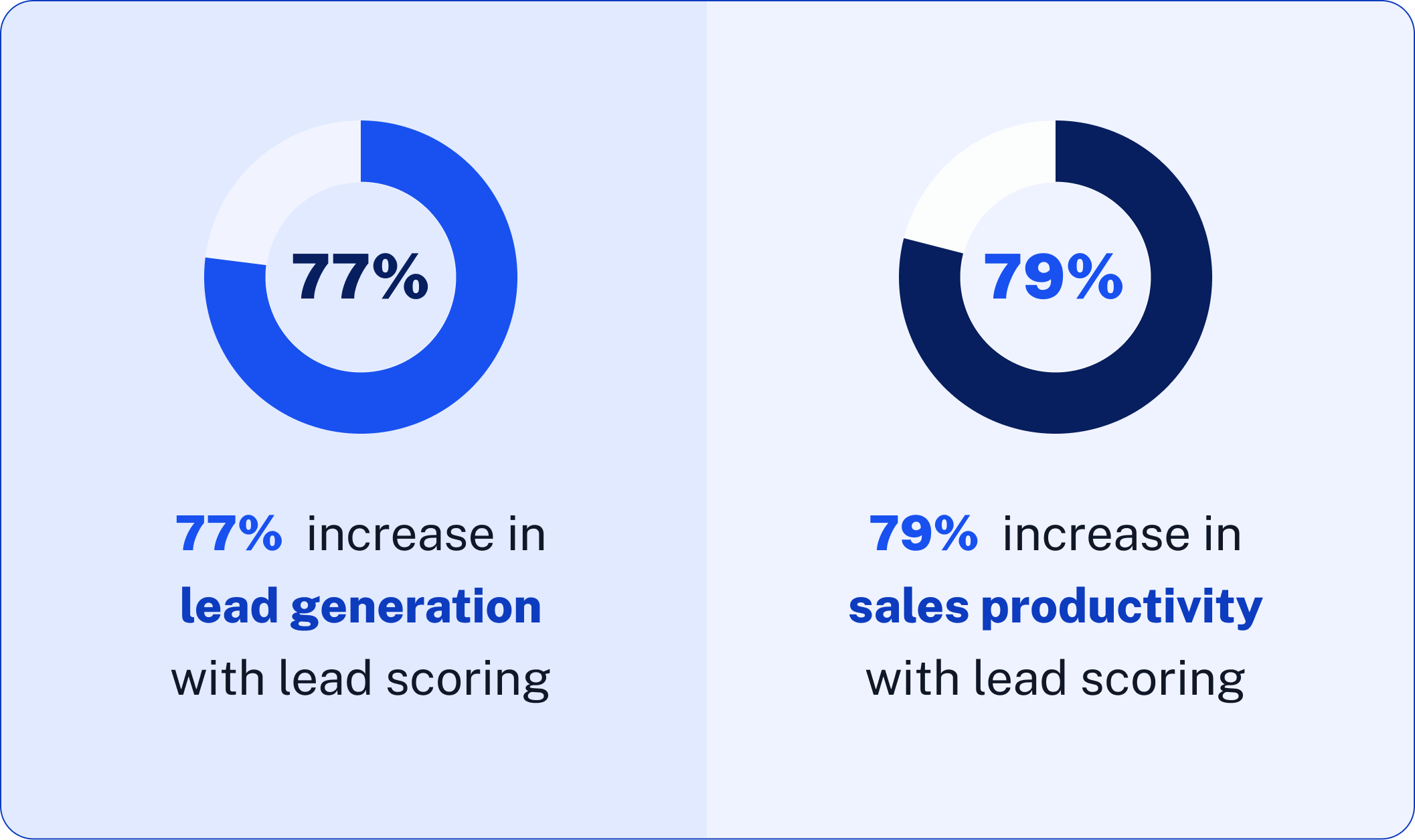
Improve Content Strategy
Analyzing the behavior of target customers, as well as monitoring their engagement with products and new features, will provide you with the essentials to improve your content strategy and develop content that aligns more with your customer needs.
Content strategy is supposed to engage more customers and drive more leads, creating and publishing new engaging content based on your strategy will help you to reach this goal. You can engage your customers via blogs, webinars, videos, case studies, or any other channels based on your content strategy and let them know about new products or features. Developing and creating engaging content that aligns more with your customer needs can help you improve your strategy.
By trying various content formats and delivery methods, you can use user behavior data to develop your content better and more personalized for the targeted customers. This will also assist you in determining which method best aligns with your business goals and customer requirements.
Enhance Outreach Efforts
Relying solely on one channel to gain customers is not a smart action to take. We should always have multiple channels in mind for customer acquisition to enhance outreach efforts as well as reaching a broader audience. You can use email marketing, social media, questionnaires, etc, to reach your targeted audience.
Crafting a well-structured outreach campaign can help you maximize your outreach efforts, ensure consistency in this process, and help you build a better relationship with your potential customers. SaaS companies can build SaaS outreach campaigns also increasing their conversion rates.
B2B Data for SaaS Product Development
The heart of every SaaS business is the SaaS products. It is important to think of product development and improving its features especially in SaaS product development. For developing a SaaS product, a clear vision comes first.
Using B2B data for SaaS product development can assist you in developing a product that aligns well with your market and customers because analyzing the right data is crucial to leading to an enhanced user experience and refining your product better.
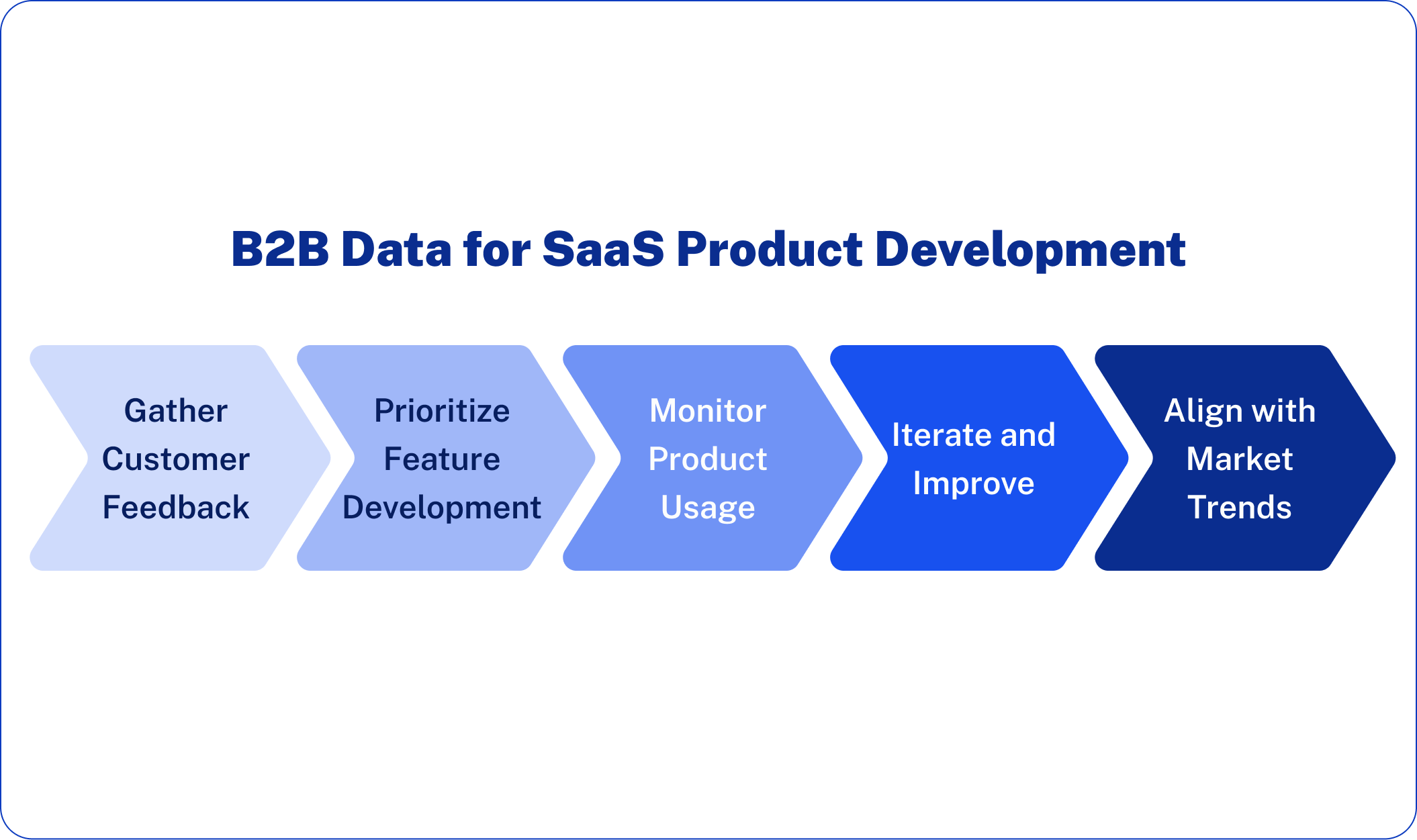
Gather Customer Feedback:
Try to collect data from potential and ideal customers to identify the possible challenges they are facing or what features they may need. You may first need to know how to collect this data. To collect and analyze this data, you can use tools such as Google Forms to obtain customer feedback that will be advantageous for your purposes.
Use a range of methods to collect customer feedback from different platforms, you can use social media or surveys to collect all customer feedback. This will allow you to gain insight into customer needs or issues they are facing while using your products or services. You can also test how your new products are performing and in what ways you can improve them based on your user’s needs.
To gather feedback, there’s no need to go for advanced methods; you can just start by gathering feedback from your own website and remember to review this feedback from time to time and pay close attention to any reported issues or complaints in order to identify the features that are potential for improvement and which features are mostly liked by customers.
Remember, the step to finish this process is to review the feedback and gather insights from all the channels to understand your user journey or general trends that are happening among customers. With this step, you can fix issues and improve conversions.
Prioritize Feature Development:
Prioritizing feature development is a process that helps the development team to balance and prioritize between customer requirements, business objectives, and technical feasibilities. Helping the team to primarily focus on features that are based on customer needs and in alignment with business objectives. In the area of SaaS marketing where It’s highly competitive, prioritizing the right features can make a big difference in your team’s success.
When we are developing a SaaS product, our resources, time, and budget are limited, that’s why we need a well-defined strategy to ensure our products meet customer expectations as well as align with our objective and stay ahead of the competitors.
Monitor Product Usage:
Investigate how and in what manner customers utilize your products. Metrics you may consider for analyzing this data include the frequency of daily logins, the features they engage with, and the duration of their sessions.
Analyze the reasons why customers may discontinue their use of your website, products, or specific features. Begin by identifying which features are most and least used by users and subsequently develop strategies to optimize these features.
Iterate and Improve:
An Iterative and improving process is all about repeating your process of launching products, getting customer feedback, and developing and improving over and over. Utilizing customer feedback can help you engage with your customers more effectively and gain a better understanding of their needs, and by leveraging B2B insights, you can enhance your product to better align with these requirements.
Establish KPIs to gain a clearer understanding of the effectiveness of your improvements and identify areas that require further enhancement. Embrace an iterative development process to enhance your ability to identify issues more rapidly and address them using real-time data.
Iteration is an important step in the process of SaaS product development, as it allows to review of customer feedback and use it in product development to further adjust it to customer needs and improve the product’s functionality and its features over time.
An iterative process is based on agile product management, meaning it can be based on feedback, testing, and analysis. It emphasizes the importance of continuous improvement, helping you to adapt to customer needs in a quicker process. In today’s business world, the ability to iterate and improve your development process can be an advance prior to your competitors.
Align with Market Trends:
In the ever-changing world of SaaS marketing, aligning product features with market trends is a challenge that we need to face every day. Staying informed of new market trends and business reports will give you the possibility to stay ahead of the market and make real-time decisions. To align with market trends, you can start with conducting market research that involves gathering information about customer feedback on your products, analyzing your specific industry trends and analyzing what your competitors are doing.
By understanding the uprising needs of your industry and the preferences of customers, you can adapt to these new trends and maintain a competitive edge. This process requires adaptability and iteration to help you stay open to evolving customer needs and make adjustments to your strategies if necessary. Aligning your strategy with market trends will help your SaaS products to stay ahead of the competition.
Final Thoughts
By now, we know that B2B data is essential for SaaS companies to grow their business further, drive more leads, and optimize their strategies. More SaaS lead generation can be reached with the help of b2b data for SaaS, and businesses can optimize their SaaS marketing strategies for the future and support data-driven decision making. In the end, data-driven solutions for SaaS businesses will bring customer-oriented innovations.
Ready to see how AI Ark can help you transform your B2B data into your business advantage?
Experience our AI-powered B2B data platform today by requesting a demo.
